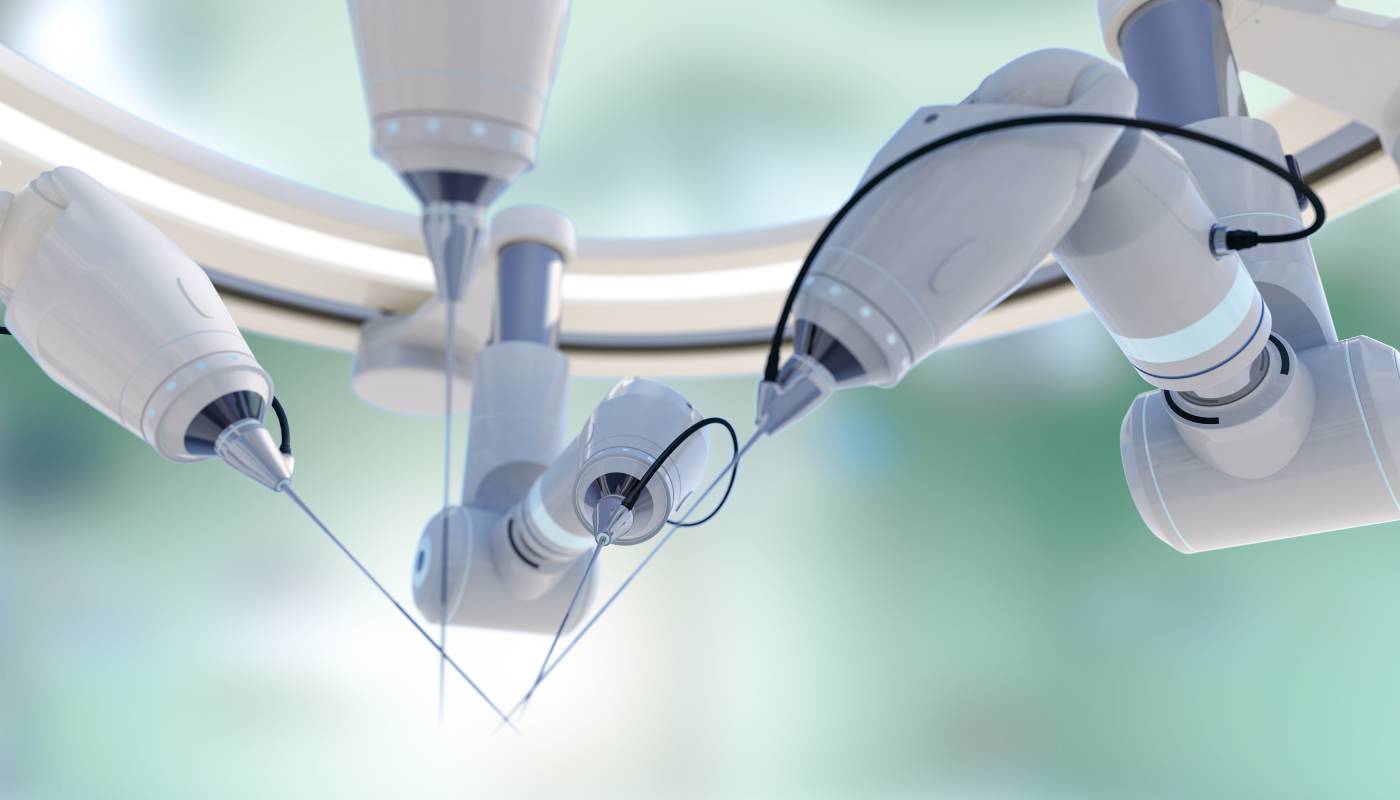Minimally invasive surgery using a camera has arguably been the most important surgical advancement in the last three decades.4 It revolutionized surgical practice with well-demonstrated advantages over conventional open surgery, including decreased surgical trauma and incision-related complications such as surgical site infections, postoperative discomfort, and hernia, as well as a shorter hospital stay and better aesthetic result.4 Cameras allow surgeons to visualize and navigate the body during procedures without creating a large incision. Several different types of cameras are used in surgery, each with its unique features and advantages that have contributed to patient outcomes.
Laparoscopic surgery uses cutting-edge technology to reduce tissue damage in which thin tubes called trocars are inserted in small “ports.” 2 A small camera (typically a laparoscope or endoscope) is then inserted into the trocars to view the procedures as a magnified image is projected to video monitors in the operating room.2 Depending on the operation, specialized equipment can also be introduced through the trocars. Not only do these techniques often provide the same results as traditional “open” surgery (which sometimes requires a big incision), but minimally invasive surgery (using tiny incisions) with cameras may also offer substantial advantages: (I) a quicker recovery; (II) a shorter length of hospitalization; (III) less scarring and tissue damage; and (IV) less discomfort.2 While laparoscopic surgical procedures has several advantages over traditional open surgery, acquiring the necessary skills, such as depth perception and video-hand-eye coordination, to move instruments within the operative field safely and effectively can be challenging.1
Robotic surgery, which also uses cameras, has emerged as a new technique that is overcoming some difficulties of the standard laparoscopic approach in the field of hepatic, pancreatic, and esophageal surgery. It offers magnified three-dimensional optics, surgeon-controlled camera vision, working arms allowing very stable retraction, and unmatched ergonomics of instrument motion, with significantly less fatigue for the surgeon. 3 One of the major concerns regarding robotic technology is the high cost of equipment purchase and maintenance.3 Robotic surgery is more costly than laparoscopic or open surgery for various reasons, including equipment, higher operating time, and replacing materials as they wear out. Furthermore, the da Vinci surgical system is the only surgical robot in use.3 A lack of competition may be one of the factors keeping prices stable and high today.3
With hundreds of millions of minimally invasive surgeries procedures performed globally, fiber optic cameras and robots have become indispensable tools and have revolutionized the field of surgery and surgeons’ capacity to capture information during surgery. 5 They have also helped to improve patient outcomes by reducing the risk of complications and the need for follow-up surgeries. However, it is important to note that using cameras in surgery does not eliminate the need for skilled surgeons. Cameras can only provide the surgeon with a visual aid; the surgeon’s skill and judgment ultimately determine the procedure’s success.
References
- Alaker, M., Wynn, G. R., & Arulampalam, T. (2016). Virtual reality training in laparoscopic surgery: A systematic review & meta-analysis. International journal of surgery (London, England), 29, 85–94. https://doi.org/10.1016/j.ijsu.2016.03.034
- Baltayiannis, N., Michail, C., Lazaridis, G., Anagnostopoulos, D., Baka, S., Mpoukovinas, I., Karavasilis, V., Lampaki, S., Papaiwannou, A., Karavergou, A., Kioumis, I., Pitsiou, G., Katsikogiannis, N., Tsakiridis, K., Rapti, A., Trakada, G., Zissimopoulos, A., Zarogoulidis, K., & Zarogoulidis, P. (2015). Minimally invasive procedures. Annals of translational medicine, 3(4), 55. https://doi.org/10.3978/j.issn.2305-5839.2015.03.24
- Biffi, R., Luca, F., Bianchi, P. P., Cenciarelli, S., Petz, W., Monsellato, I., Valvo, M., Cossu, M. L., Ghezzi, T. L., & Shmaissany, K. (2016). Dealing with robot-assisted surgery for rectal cancer: Current status and perspectives. World journal of gastroenterology, 22(2), 546–556. https://doi.org/10.3748/wjg.v22.i2.546
- Bouquet de Joliniere, J., Librino, A., Dubuisson, J. B., Khomsi, F., Ben Ali, N., Fadhlaoui, A., Ayoubi, J. M., & Feki, A. (2016). Robotic Surgery in Gynecology. Frontiers in surgery, 3, 26. https://doi.org/10.3389/fsurg.2016.00026
- Mascagni, P., Alapatt, D., Sestini, L., Altieri, M. S., Madani, A., Watanabe, Y., Alseidi, A., Redan, J. A., Alfieri, S., Costamagna, G., Boškoski, I., Padoy, N., & Hashimoto, D. A. (2022). Computer vision in surgery: from potential to clinical value. NPJ digital medicine, 5(1), 163. https://doi.org/10.1038/s41746-022-00707-5
- Scognamiglio, P., Stüben, B. O., Heumann, A., Li, J., Izbicki, J. R., Perez, D., & Reeh, M. (2021). Advanced Robotic Surgery: Liver, Pancreas, and Esophagus – The State of the Art?. Visceral medicine, 37(6), 505–510. https://doi.org/10.1159/000519753

